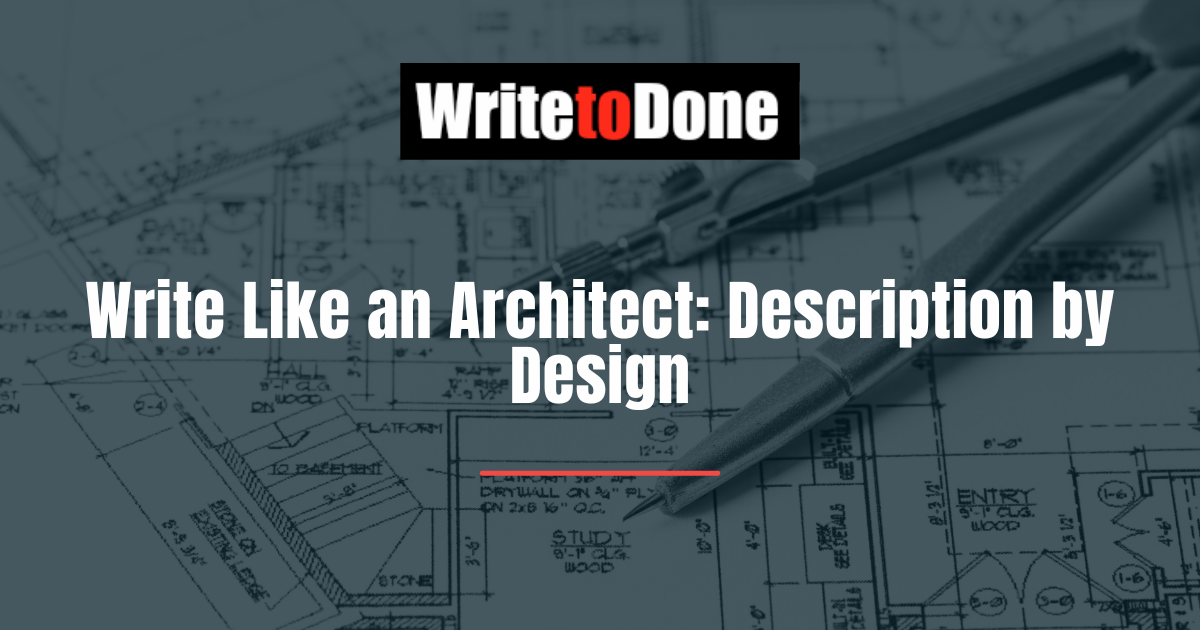Write like an architect
Imagine that your story or blog is a house.
Can you picture it?
What does it look like? How does it feel to be inside?
Is it still just a wooden frame hastily nailed together and barely standing? Or a gaudy eyesore with so much ornamentation that you can’t see the actual building?
If your writing resembles the first house, it’s probably lacking the finishing touches of description.
If your writing looks like the second house (you guessed it) there’s probably so much description that readers lose the main point of the whole essay.
So how can you strike a balance? When do you know you’ve gotten the right amount of description–not too much, not too little?
When I dropped out of architecture school all those years ago to become a writer, I searched for ways to apply whatever design knowledge had gotten stuck in my brain.
As with any discipline, there’s that one rule that sticks with you for life like any good cliché.
In architecture school it was. . .
“Form follows function.”
It’s extra memorable because of the alliteration.
At least form should follow function.
In a perfectly designed world, I guess it would be.
Having learned those lessons in my early architecture courses, I eventually saw the metaphor between architecture and writing
Writing with too much description is like an over cluttered house. Visitors (and readers) can’t move through the space. They can’t see where they’re going or see the big picture.
Without description, however, writing is like an empty house. Visitors have no reason to stay.
Here’s how the principle of “form follows function” can apply to descriptive writing.
Achieve quality rather than quantity.
Instead of asking, “How much have I described?” ask “How well have I described?” The latter question will intuitively lead you to add more or cut more when necessary.
Now let’s look at the two most fundamental functions of description: Characterization and Atmosphere (or mood). Other elements like setting and plot go into the main categories of characterization and mood.
But I’m not just going to leave you hanging there. Certainly, more specific strategies would be useful.
Characterization
For characterization, use description that makes your characters surprising and unique. As Becca Puglisi and N. Strauss explain in their posts, this means not defaulting to standard, cliché descriptions. It means differentiating characters from others and making them specific.
To make form follow function, your description should bring out the qualities that make your character distinct and memorable.
Think about the character’s most significant and dominant traits.
Which characteristics contribute to the story’s conflict, tension, and plot?
Is the character painfully shy? OCD? A mathematical genius?
Focus on those aspects of your character description.
For example, a generic depiction of a character might say,
“Joe had bright green eyes.”
However, this description could become special if no one else in Joe’s family has green eyes, and the town mayor, whom Joe despises, has those same green eyes.
See how this character description creates tension and the potential for conflict?
Atmosphere
The mood and atmosphere are usually created by describing the setting.
I know what you’re thinking.
Why not just title this part of the post “Setting”?
Because talking about setting just for the sake of talking about setting is NOT functional.
A functional description of setting develops… That’s right! It develops characterization and atmosphere, which can thicken the tension, conflict, and plot.
When describing the setting, have a clear idea of what you want to convey. Is it horror or havoc? Redemption or romance?
A remote island can be either romantic or terrifying depending on the focus of the description.
Let me show you.
As the golden sun set over the shimmering shore, and the breeze gently drifted in, Jane’s eyes met Joe’s.
Versus
As the looming shadows grew larger, and the ghastly calls of wild beasts echoed in the dense wilderness, Jane’s eyes met Joe’s.
Remember that all architects work with the same materials (walls, roofs, beams, etc.) but they all create their own unique design structures every time.
The same is true for writers. Just because I’ve shared these general principles, doesn’t mean your pen or keyboard will suddenly turn into a cookie cutter.
Take of these ideas what you will, and write.
Do you have anything to add to the architecture metaphor? Let us know in the comments! If not, please share other analogies that you find useful for writing.
About the author
Sarah L. Webb is the creator of S. L. Writes On Writing, which shares valuable lessons gleaned from books on the writing craft, life, and business. You are welcome to recommend books on writing for a featured spot.
















